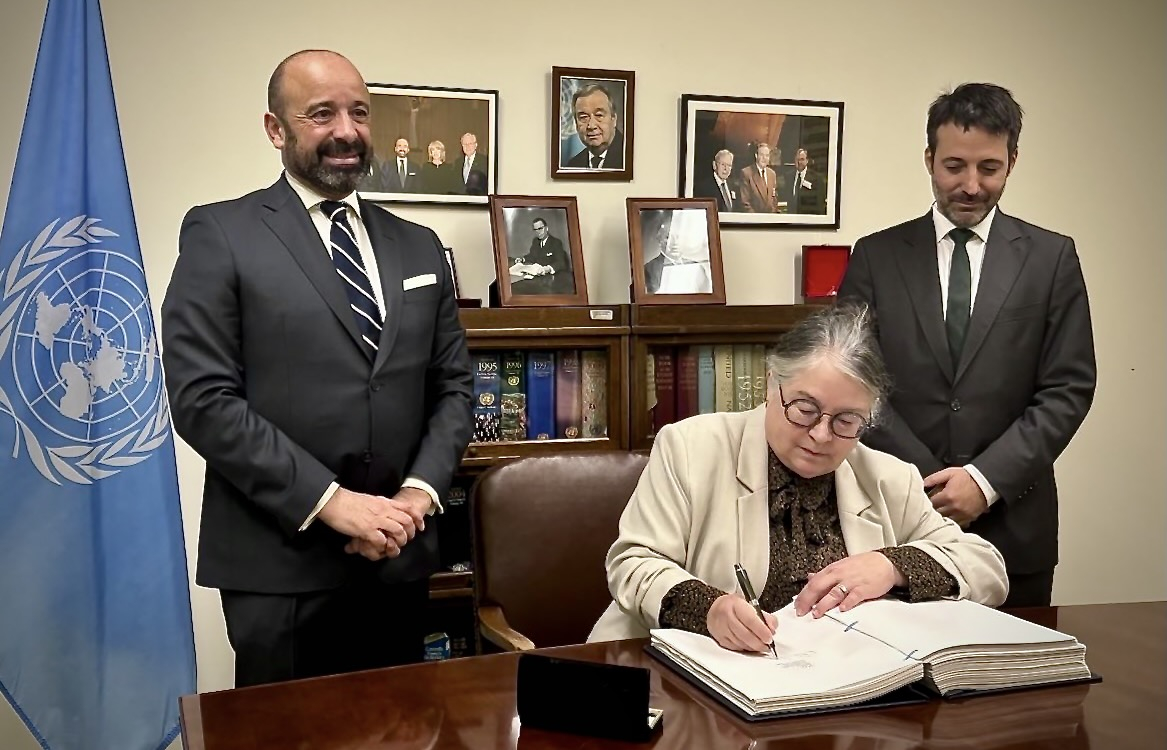Canada has signed a landmark global ocean agreement on the first anniversary of the historic document’s creation.
Minister of Fisheries and Oceans Diane Lebouthillier signed the High Seas Treaty at the United Nations in New York on Monday during her 12-day tour in the U.S. to promote Canadian seafood, marine conservation and a sustainable ocean economy.
Ocean conservation groups celebrated the signing but urged the Canadian government to act quickly and ratify the treaty aimed at protecting marine biodiversity in shared international waters, also known as the BBNJ Agreement.
The accord is the result of decades of work and provides a legally binding blueprint to create marine-protected areas (MPAs) in international waters in a bid to conserve marine life and the fair, sustainable use of ocean resources.
The agreement represents one of the first co-ordinated international efforts to preserve the high seas, which make up two-thirds of the ocean but are inadequately governed by a patchwork of agreements and agencies largely focused on resource extraction, like fishing or underwater mining.
Signing the agreement was an important step to meet Ottawa’s national and international biodiversity promise to protect 30 per cent of oceans, waters and land by 2030, the federal government noted in a statement.
Canada, a maritime nation with the longest coastline in the world, is proud to sign the treaty that reflects a co-ordinated approach to creating marine conservation areas, Lebouthillier said.
“People around the world rely on healthy oceans. They are the backbone of many economies, cultures and ecosystems,” she said.
Canada joins other nations pushing to protect marine life in shared ocean waters, said Susanna Fuller, Oceans North’s vice-president of conservation and projects.
“Now the race is on to ratify it,” Fuller said.
Ocean conservation groups across the globe are pushing so the treaty can be finalized by the UN Ocean Conference in 2025.
The agreement will only be operational after at least 60 countries sign and ratify the document, Fuller stressed.
Canada, like 88 other countries that have signed the treaty, must also pass domestic legislation spelling out that it will abide by the treaty’s terms.
To date, only the Pacific island nation of Palau and Chile have ratified the deal.
The ocean is badly stressed by biodiversity loss and climate change, so getting the treaty formalized quickly is vital, Fuller said.
Canada’s signature gives the treaty some extra momentum and the country can now leverage its global reputation of environmental leadership by pushing it forward on the international stage, she added.
“Canada has an important role to play in advancing the treaty and ensuring the ocean continues to sustain future generations,” she said.
The sooner the treaty is signed, the sooner work can begin on a global network of ocean sanctuaries desperately needed by threatened marine life, said Sarah King, lead for Greenpeace Canada’s oceans and plastics campaign.
For countries to meet the global 30 by 30 promise, more than 11 million square kilometres of ocean must be protected every year, King said.
“We need to see more urgency to write this historic treaty into law,” she said.
Rochelle Baker / Local Journalism Initiative / Canada's National Observer




Comments